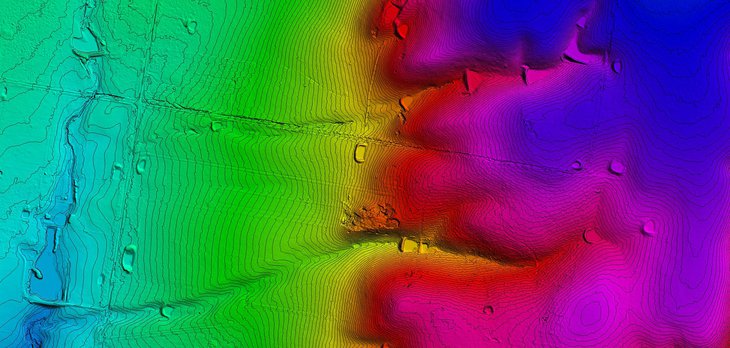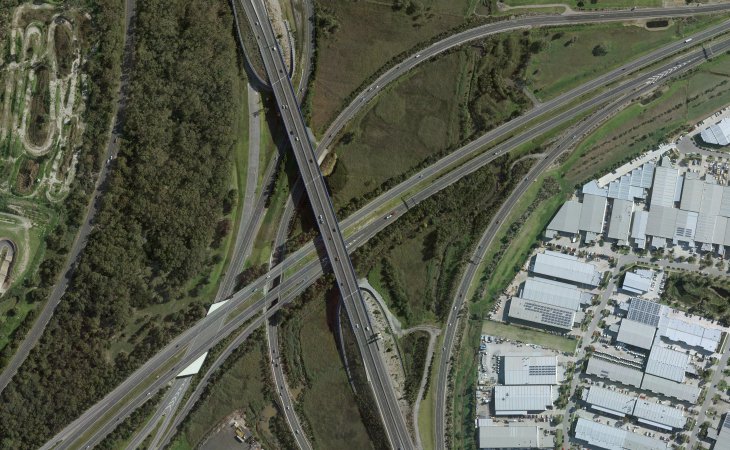Aerometrex’s geospatial data provides an accurate view of ground conditions and helps create an efficient transport system. Our data helps build a reliable base map to aid inspection of infrastructure across transport networks, identify optimal route plans and make more effective business decisions.


Our 2D aerial orthoimagery can help plan and design transportation infrastructure as well as monitor and maintain intelligent road, rail, air and marine transport systems. By delivering high-resolution visual data linked to the condition of assets, imagery can improve the safety of inspections, help prioritise specific repairs, plan expansions, and reduce overall management costs. With current aerial imagery, relevant authorities can optimise routing and reduce costs.
Digital surface models can assist in measuring slope, embankments and the potential for road flooding. These models are also useful for cut and fill calculations during transport network design and construction.
Geospatial data can help comprehensively identify, tag, and locate assets on bridges, roads, and tunnels. It can also assist in accurately measuring the length of these assets and provide additional insights along the corridors, including vegetation encroachment, post disaster management, and engineering focused applications.


Transport agencies are revolutionising the way 3D models are being used to develop smarter networks, with large scale 3D models being adopted to manage multiple, large‐scale transport projects. These reality models, when integrated with other information, such as public movement, current traffic conditions, offer a basis for predicting the future. These 3D models offer a common platform, for continuous improvement while retaining a central point of truth, and the information is scalable.
3D tools & models are being widely used to take major transport infrastructure to delivery in record time, by allowing project managers to pre-empt conflicts and opportunities to minimise delays and risks. These 3D models are also being used to predict network movement, guide local transport plans, advise specific investments, identify corridor opportunities and assess environmental impacts. Engineering‐accurate 3D tools optimise construction outcomes and provide a framework for ongoing asset management in addition to engaging and training end users.
3D city modelling can help map out a realistic display of the city and its navigation infrastructure. Due to its ability to allow the relevant authorities to view it from a very realistic point of view, it is gaining widespread acceptance as a tool for intelligent/smart transportation.


With LiDAR data, agencies can accurately map terrains and manage infrastructure assets. This dataset offers a great tool to identify relevant changes and supplement the manual inspection of assets such as rail lines. Change detection analysis with LiDAR can help identify broken ties, fouled ballasts, missing fasteners, dying vegetation, etc.
Transportation corridor mapping to support engineering planning and change detection requires high spatial resolution and high scale engineering mapping accuracy. With LiDAR, these requirements can be met in a cost effective and time efficient manner.


Use current and historical imagery to spot changes and identify risk, like vegetation overgrowth, storm damage, or ageing assets. Keep a close eye on a vast network of assets, whether its road, rail, bridge or others.
Unlimited access to aerial imagery that is updated up to 4 times every year and data archives that allow you to virtually travel back in time to see how things have changed.